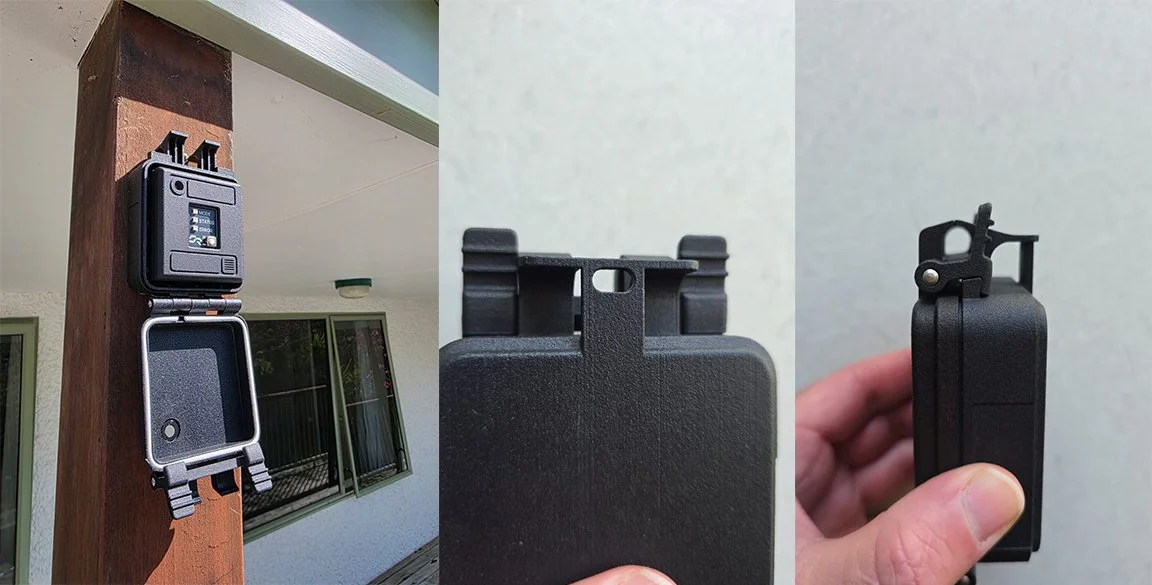Echoes Around
Te Mata
Our first local project of the season is about to take flight!
We’re excited to launch our first local project as part of this year’s National Bat Survey at Te Mata Peak, in collaboration with Te Mata Park, Cape Sanctuary and Biodiversity Hawke’s Bay.
We’re inviting locals within a 25 km radius of Te Mata Peak to host one of our Demeter Bat Detectors this season between October 1st 2025 and 30th April 2026. Community support is at the heart of bat conservation in Aotearoa, and by taking part you’ll be helping us gather valuable insights into the lives of these remarkable animals.
We’ve put together a quick overview below of how bat detectors are set up and what’s involved, so you can see what participation looks like before signing up. It’s free to take part, and no experience is needed! As a thank you, everyone who joins our Te Mata Peak project will receive a small gift for being awesome bat detectives.
To get involved, simply complete the expression of interest form below. Once you’ve submitted it, a member of our team will be in touch. At the end of the season, we’ll also share the survey results with you.
Want to learn more about the wider National Bat Survey? Click the button below.
Te Mata Peak project detector placement
Our Demeter Detectors and their cases measure approximately 100.5 × 72 × 35mm and weigh 77g. These can be attached with a small nail, screw or on a wire/cable tie using the loop on the back of the detector case. If assistance is needed, we can advise on the best ways to install.
The best locations on your property to attach a detector are:
1. Gardens with trees
Place the detector along a tree line, hedge, or shelterbelt if available, as bats often commute along these.
Avoid pointing it directly into dense foliage (aim for 1.5m of clear area around the detector).
2. Near open spaces
Good spots include grassy areas, forest edges pointing outward, lawns, driveways or open corners of a garden where bats can forage over open areas.
3. Close to water
If there’s a stream, pond, river, drainage ditch, wetland or even a swimming pool nearby, that’s an excellent location.
4. Building edges
Mount the detector on a fence post, deck post or shed support (away from windows/bright lights). Bats sometimes use buildings as commuting routes.
Avoid mounting detectors direectly on large flat surfaces like walls or fences. This causes echoes and results in hard to decipher recordings. Aim for 1.5m of clear area around the detector.
5. Safe & elevated
We aim for 1.5–2.5m high on a pole, or tree out of reach of pets, children (if they aren’t survyeing!), or sprinklers. Remember - aim for 1.5m of clear area around the detector. This will give you the best chance of good quality recordings over the largest area.
Places to avoid:
1. Under bright security lights (bats may avoid them).
2. Right by heat pumps, air conditioners, or roads (constant noise interferes with recording).
3. Hidden deep in vegetation (the microphone will be blocked).
Once the detector has been placed, it is good to go! We will provide you with easy-to-follow guidance on how to set up your detector, charge and change batteries and upload data from your SD card to our online portal. At the end of the season, we’ll organise a time with you to collect the device.
Key areas of interest:
Heretaunga Catchment Zone:
Ngaruroro and Tutaekuri Rivers, Karamu Stream, Napier urban streams, the Ahuriri Estuary and Poukawa and Waitangi wetlands.
Tukituki Catchment Zone:
Tukituki and Waipawa Rivers
Southern Coast Catchment Zone:
Maraetotara River, Waipuka, Waingongoro, Pouhokio and Te Apiti Streams, and the Mangakuri River


